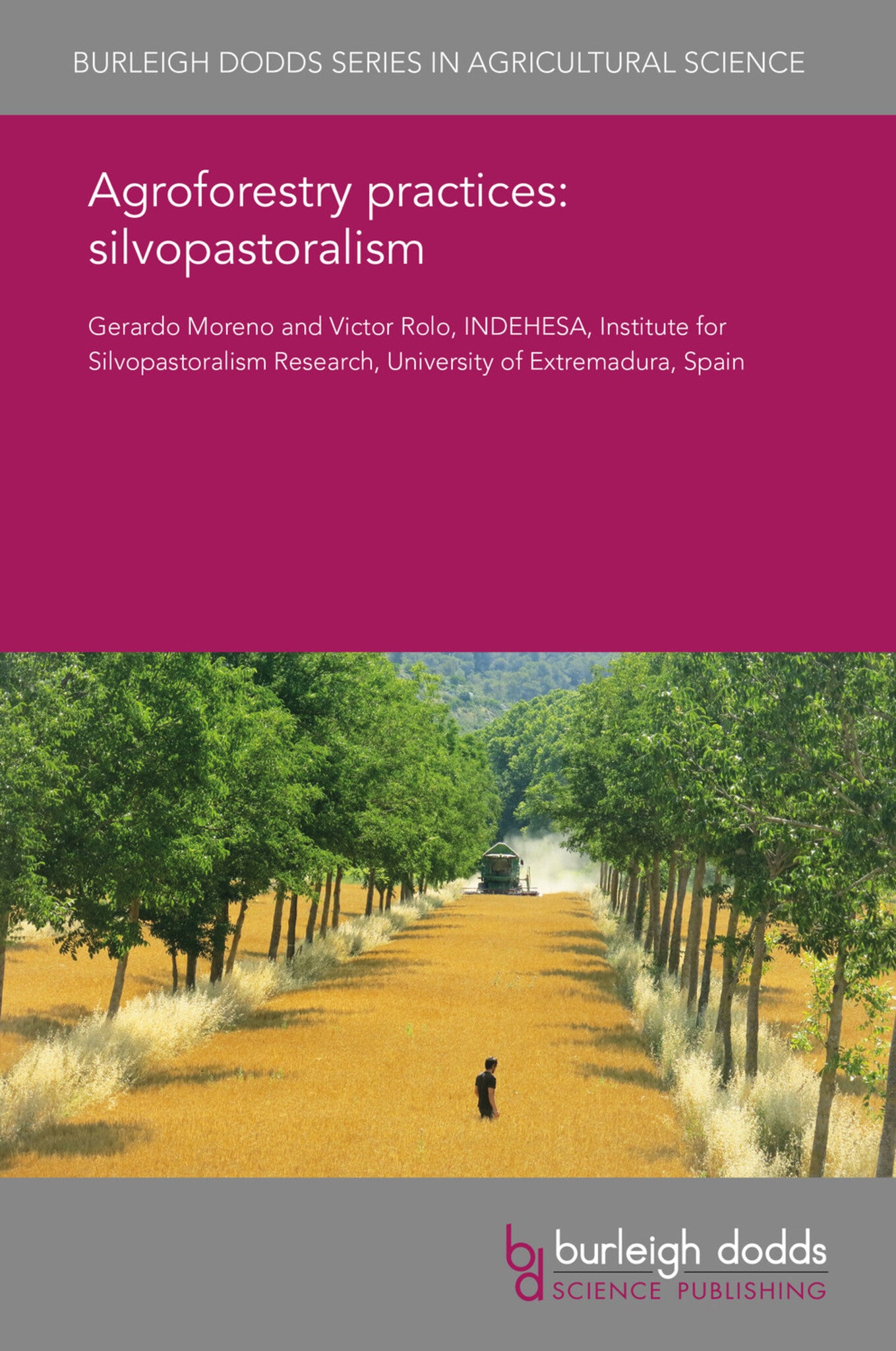We're sorry. An error has occurred
Please cancel or retry.
Agroforestry practices: silvopastoralism
Regular price
£25.00
Sale price
£25.00
Regular price
£25.00
Unit price
/
per
Sale
Sold out
Re-stocking soon
Silvopastoralism is a traditional agroforestry practice that is still managed across the world for raising livestock in lands that often include a combination of grass understorey with a sparse cov...
Read More

Some error occured while loading the Quick View. Please close the Quick View and try reloading the page.
Couldn't load pickup availability
- Format:
-
03 June 2019

Silvopastoralism is a traditional agroforestry practice that is still managed across the world for raising livestock in lands that often include a combination of grass understorey with a sparse cover of trees and/or shrubs. The woody component plays multiple roles such as forage resource, shading and sheltering for livestock and delivering wood, firewood, cork and tannings, among other goods. This chapter firstly describes silvopastoral systems from around the world. It goes on to stress the importance of trees for livestock production. A section is also included on the role of trees for biodiversity and ecosystems services as in recent times silvopastoral systems have been valued for their contribution to carbon sequestration, water quality and biodiversity conservation. The chapter concludes with how to design and manage silvopastures and a look to future trends in research, providing a list of priorities for silvopastoralism going forward.

Price: £25.00
Publisher: Burleigh Dodds Science Publishing
Imprint: Burleigh Dodds Science Publishing
Series: Burleigh Dodds Series in Agricultural Science
Publication Date:
03 June 2019
ISBN: 9781838797836
Format: eBook
BISACs:
TECHNOLOGY & ENGINEERING / Agriculture / Forestry, Forestry and silviculture, TECHNOLOGY & ENGINEERING / Agriculture / Sustainable Agriculture, Sustainable agriculture

1 Introduction 2 Silvopastoral systems (SPs) 3 Importance of trees for livestock production 4 Trees for biodiversity and ecosystem services 5 Designing and managing silvopastures 6 Summary 7 Future trends in research 8 Where to look for further information 9 References



